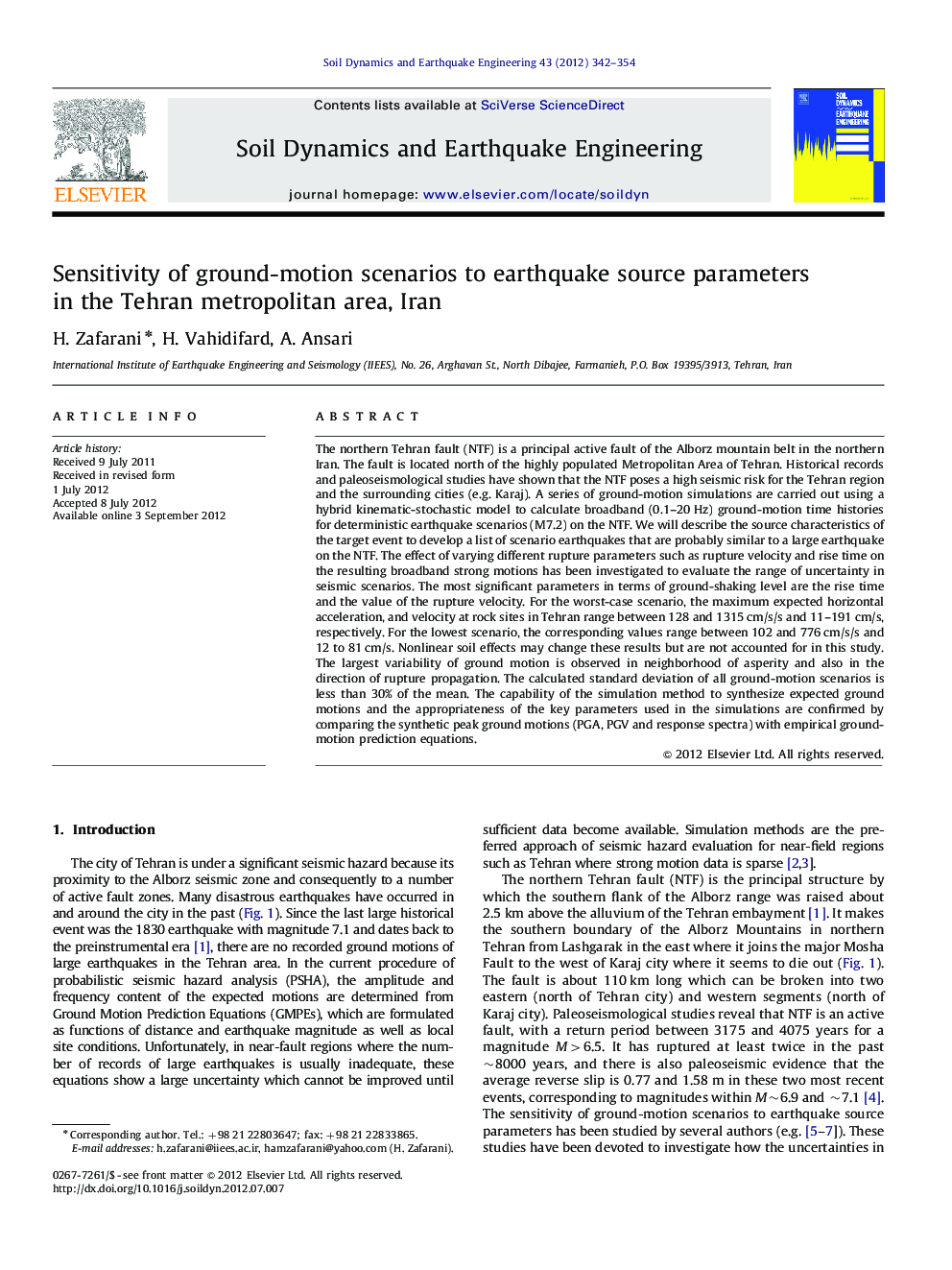| Article ID | Journal | Published Year | Pages | File Type |
|---|---|---|---|---|
| 304438 | Soil Dynamics and Earthquake Engineering | 2012 | 13 Pages |
The northern Tehran fault (NTF) is a principal active fault of the Alborz mountain belt in the northern Iran. The fault is located north of the highly populated Metropolitan Area of Tehran. Historical records and paleoseismological studies have shown that the NTF poses a high seismic risk for the Tehran region and the surrounding cities (e.g. Karaj). A series of ground-motion simulations are carried out using a hybrid kinematic-stochastic model to calculate broadband (0.1–20 Hz) ground-motion time histories for deterministic earthquake scenarios (M7.2) on the NTF. We will describe the source characteristics of the target event to develop a list of scenario earthquakes that are probably similar to a large earthquake on the NTF. The effect of varying different rupture parameters such as rupture velocity and rise time on the resulting broadband strong motions has been investigated to evaluate the range of uncertainty in seismic scenarios. The most significant parameters in terms of ground-shaking level are the rise time and the value of the rupture velocity. For the worst-case scenario, the maximum expected horizontal acceleration, and velocity at rock sites in Tehran range between 128 and 1315 cm/s/s and 11–191 cm/s, respectively. For the lowest scenario, the corresponding values range between 102 and 776 cm/s/s and 12 to 81 cm/s. Nonlinear soil effects may change these results but are not accounted for in this study. The largest variability of ground motion is observed in neighborhood of asperity and also in the direction of rupture propagation. The calculated standard deviation of all ground-motion scenarios is less than 30% of the mean. The capability of the simulation method to synthesize expected ground motions and the appropriateness of the key parameters used in the simulations are confirmed by comparing the synthetic peak ground motions (PGA, PGV and response spectra) with empirical ground-motion prediction equations.
► Broadband ground-motion time histories have been simulated for scenarios, in the Tehran Metropolitan Area, Iran. ► High frequencies (1.0–20.0 Hz) are calculated by the stochastic finite fault method. ► Low frequencies (0.1–1.0 Hz) are calculated using the discrete wavenumber-finite element method. ► Calculation for each frequency band is performed separately. ► The total ground motion is obtained by summing up the outputs in the time domain.
